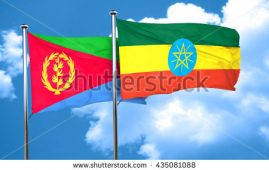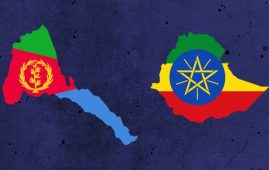(By John Daly)
On 27 September Ethiopian Prime Minister Hailemariam Desalegn and Deputy Prime Minister Dr. Michael Debretsion announced the first independent power project in Ethiopia’s history. The $4 billion 1,000 megawatt Corbetti geothermal plant will be built in two 500 megawatt stages over 8-10 years and when it comes online, will be Africa’s largest geothermal facility. Reykjavik Geothermal, a U.S.-Icelandic private developer, will build and operate the power plant, located at Corbetti Caldera, considered a top geothermal resource by the team of Icelandic and Ethiopian geoscientists that have investigated the region.
The project dovetails nicely with Ethiopia’s ambitious plans to become a carbon-neutral economy by 2025. Although more than 69 percent of the population of sub-Saharan Africa is without electricity, the continent has significant potential to develop clean geothermal, hydroelectric, wind, and solar energy resources. In Ethiopia, only about 20 percent of the population currently has access to electricity.
While the Corbetti Caldera geothermal project is not Ethiopia’s only geothermal project under construction, it is by far its largest. The Aluto Langano 7 megawatt geothermal plant, 125 miles south of Addis Ababa, is being built with $12 million of financial assistance from the Japanese government, matched by $13 million from the World Bank, while the Ethiopian government is contributing $10 million, and there are already plans to increase its output. State-owned Ethiopian Electric Power Corp. (EEPCo) spokesman Miskir Negash maintains that Ethiopia has the potential to generate at least 5,000 megawatt from geothermal energy, adding, “We plan to upgrade the Aluto Langano geothermal project, which currently produces 7 megawatts, ten-fold to 70 megawatts by 2015.”
So, what’s the downside to this otherwise sunny picture?
Cost.
According to EEPCo, geothermal power requires drilling as deep as two miles into the earth’s crust, which is both expensive and technologically challenging A further cost factor is a current lack of qualified Ethiopian geothermal technicians, which makes electricity from geothermal sources more costly than from hydro and wind power, though in Ethiopia is still less expensive than solar power.
Hydroelectric power is currently Ethiopia’s energy bargain, as it costs $0.5 per kilowatt, while in some neighboring East African countries cost can run up to $1 per kilowatt. And Ethiopia’s government has big plans, as under its Master Plan, Ethiopia aims to be producing 30,000 megawatts by 2020, with much of it to be exported. A $1.5 billion Ethiopian-Kenya transmission line will connect into East Africa, and with the completion of Ethiopian-Sudan and Sudan and Egypt transmission line projects, Ethiopia will have access to West African markets.
Financial geothermal considerations, while significant, have not deterred the Ethiopian government from pursuing geothermal power in its quest for carbon-neutral energy. On 16 September The Icelandic International Development Agency signed a Partnership Agreement with the Ethiopia Government to cooperate in geothermal development.
Ethiopia’s Geological Survey and EEPCo represent the government in the project, initiated under an Iceland – World Bank agreement on developing African geothermal energy. The Ethiopian project in is the second to be initiated by ICEIDA following one in Rwanda. While also pressing forward with hydroelectric energy, the Ethiopian government has now decided to prioritize geothermal development as a key energy development. ICEIDA will assist Ethiopia’s Geological Survey and EEPCo with initially identifying promising geothermal surface sites as well as develop relevant geophysical and geochemical studies to identify locations for drilling of exploration and production wells in target sites.
The geothermal surface exploration activities will focus on the Tendaho Alalobeda and Aluto Langano regions, both considered to have great potential for geothermal energy production. A capacity building project for geothermal exploration will also be initiated in Gedemsa.
And geothermal power has two immense advantages for Ethiopia that neither hydrocarbon imports nor hydroelectric power can match. Oil and natural gas imports are expensive, and Ethiopia’s downstream Nilotic neighbors have already made their concerns evident cover the effect of damming tributaries of the Nile. Geothermal power avoids both these pitfalls.
While geothermal energy currently produces less than one percent of Ethiopia’s current electrical output, for the reasons above, now is the time for the Ethiopian government to begin ringing its international doorbells – hard.
**********
*Originally published on OilPrice.com, on Oct. 10, 2013, titled “Ethiopia to Build Africa’s Largest Geothermal Plant”.






1 Comment on this post
Comments are closed.
Leave a Comment